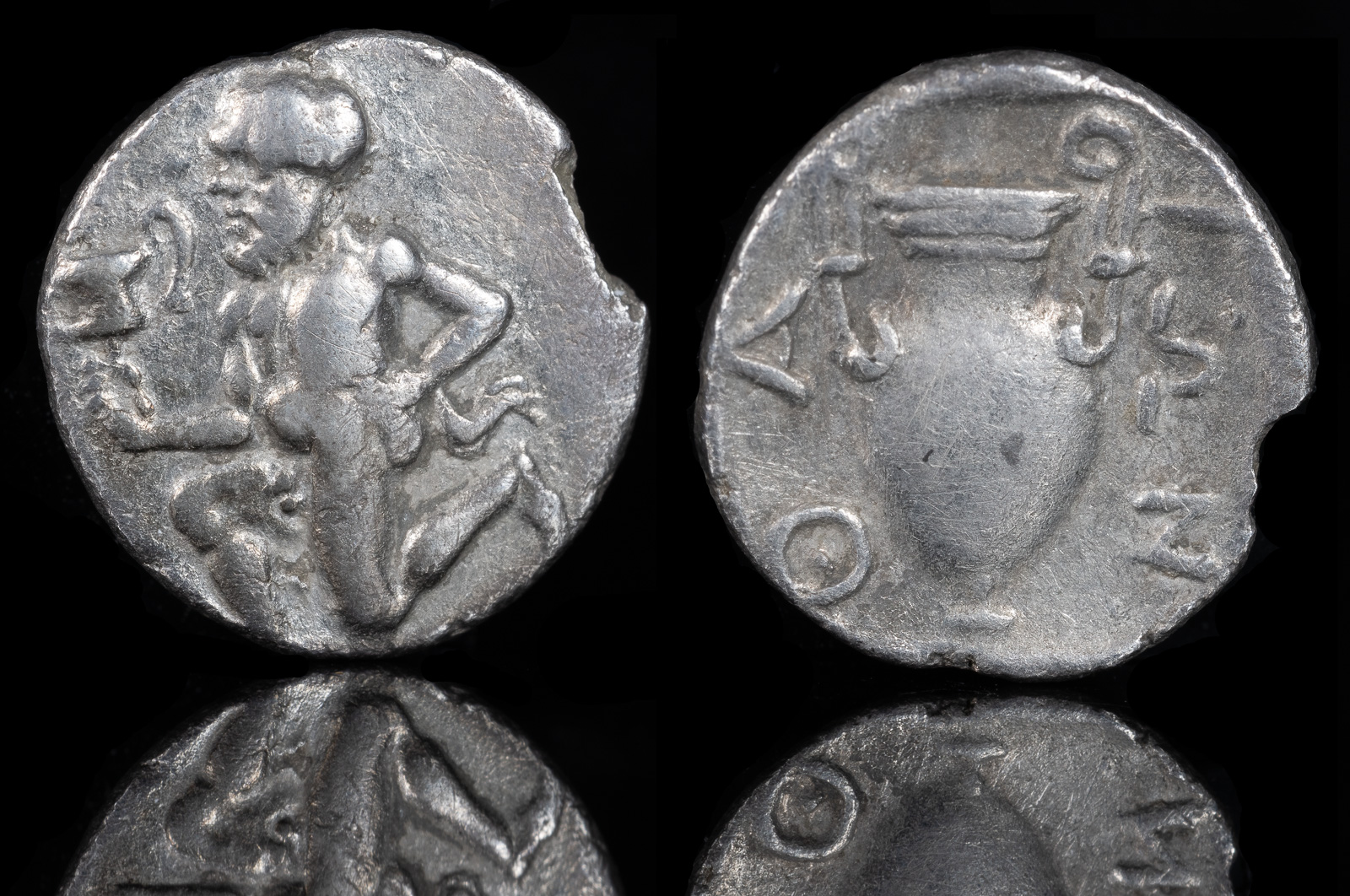
Islands off Thrace, Thasos
Circa 404-340 BCE
AR Trihemiobol 0.69g, 11mm, 6h
Satyr kneeling to left, holding kantharos and resting his left hand on hip
Amphora; ΘA[Σ]ΙΩΝ around.
SNG Copenhagen 1029; Le Rider, Thasiennes 27; HGC 6, 351
Ex J. Greiff Collection
Ex Roma
Thasos is infamous for its coinage depicting a satyr dragging away a woman, who on some dies is upset and on others quite pleased at the situation. Even in ancient times the coinage was popular, but today it’s become completely controversial.
That would be a mistake, as most understand that the image depicted is of a dance and not of an abduction. Indeed, the island is believed to have taken its name from the dance, hence its depiction on their coinage. Other ancient sources attributes its name to Thasos, who was a Phoenician.
In 650 BCE, settlers from Paros founded the principal city on Thasos. The city then thrived by its numerous mines, including gold, that it operated both on the island and on the nearby mainland.
Eventually, their power waned and they ceased minting their intriguing silver issues. After that, they wobbled like most cities of the time between Athens and Sparta, until eventually Philip II came along and claimed them for Macedonia.
The city also exported wine, which was famous, nuts and marble. This coin comes from just before it fell under Macedonian control, as afterwards their coinage was sparse and not as interesting.
According to Athenaios, “the wine distributed in the prytaneion on Thasos is remarkably delicious, because it has seasonings added.”
Neapolis is founded by settlers from Thasos.
Histaios besieges Thasos, but is unsuccessful.
Thasos rebels against Athenian rule and is besieged.
The property of citizens of Neapolis in Thasos is confiscated by the oligarchs there.
Thasos is finally taken by Athens and are forced to tear down their walls.
Thasos expels its Spartan contingent and admits Athens under Thrasyboulos.
Thasos falls to Sparta under Lysander.
Eresos, Byzantion, Chios,Mytilene, Methymna, Rhodes, Thebes, Korkyra, Eretria, Kios, Samos, Naxos, Andros, Myrina (Lembos), Hephaistia, Imbros, and Thasos join the Second Athenian League, reaffirming its alliance with Athens in response to the growing threat of Persian interference and internal Greek conflicts.
Philippi founded by settlers from Thasos and named Thasian Epeiros.
Philip V tricks Thasos into subjugation, promising to not install a garrison and then enslaving the entire city.